Weihai Li
Real-time Online Multi-Object Tracking in Compressed Domain
Apr 05, 2022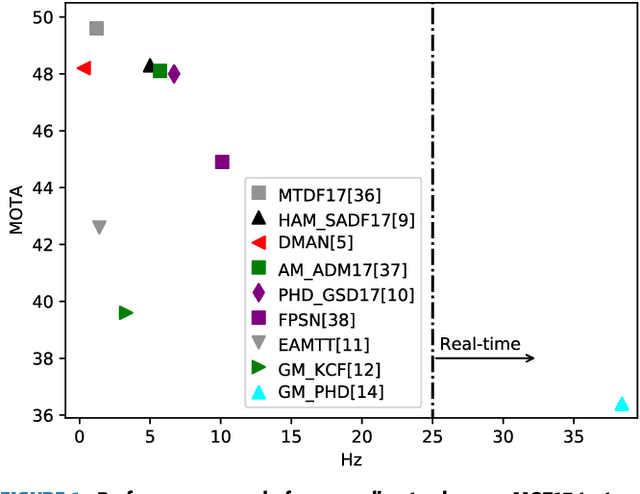

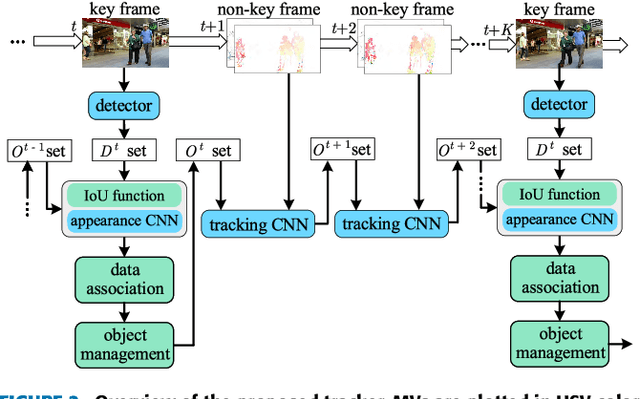

Abstract:Recent online Multi-Object Tracking (MOT) methods have achieved desirable tracking performance. However, the tracking speed of most existing methods is rather slow. Inspired from the fact that the adjacent frames are highly relevant and redundant, we divide the frames into key and non-key frames respectively and track objects in the compressed domain. For the key frames, the RGB images are restored for detection and data association. To make data association more reliable, an appearance Convolutional Neural Network (CNN) which can be jointly trained with the detector is proposed. For the non-key frames, the objects are directly propagated by a tracking CNN based on the motion information provided in the compressed domain. Compared with the state-of-the-art online MOT methods,our tracker is about 6x faster while maintaining a comparable tracking performance.
Towards Generalizable and Robust Face Manipulation Detection via Bag-of-local-feature
Mar 14, 2021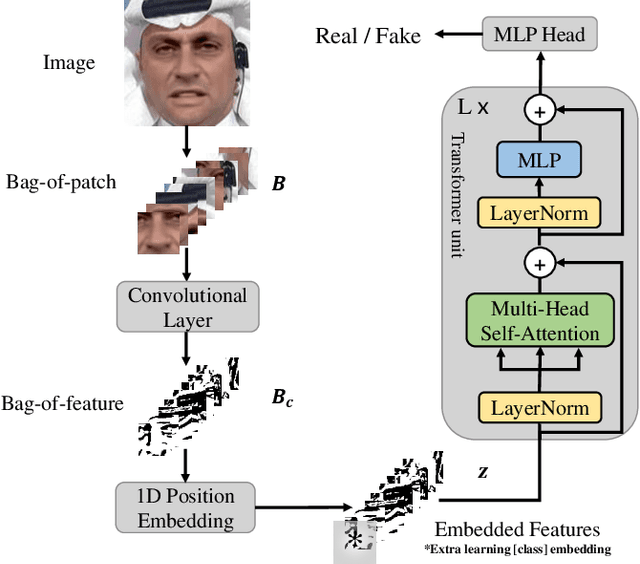
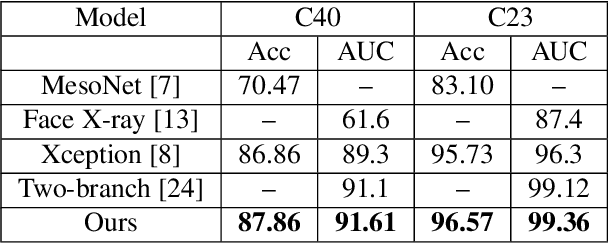

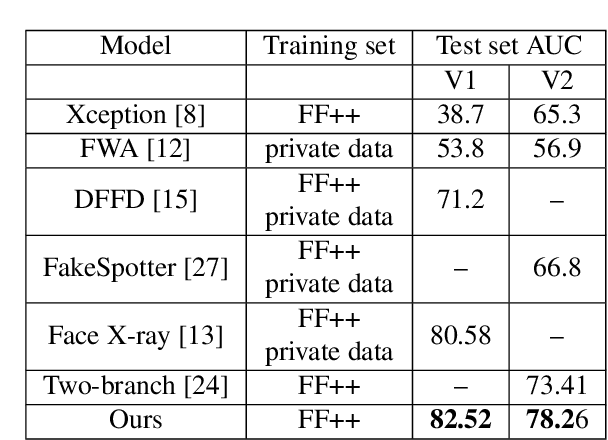
Abstract:Over the past several years, in order to solve the problem of malicious abuse of facial manipulation technology, face manipulation detection technology has obtained considerable attention and achieved remarkable progress. However, most existing methods have very impoverished generalization ability and robustness. In this paper, we propose a novel method for face manipulation detection, which can improve the generalization ability and robustness by bag-of-local-feature. Specifically, we extend Transformers using bag-of-feature approach to encode inter-patch relationships, allowing it to learn local forgery features without any explicit supervision. Extensive experiments demonstrate that our method can outperform competing state-of-the-art methods on FaceForensics++, Celeb-DF and DeeperForensics-1.0 datasets.
Real-Time Anomaly Detection With HMOF Feature
Dec 12, 2018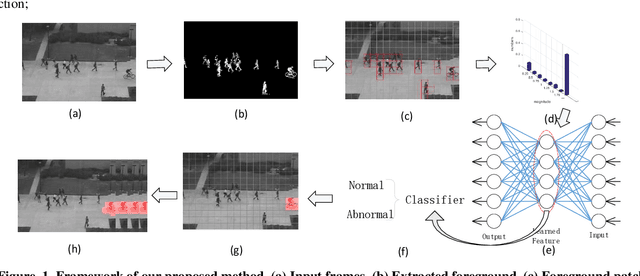
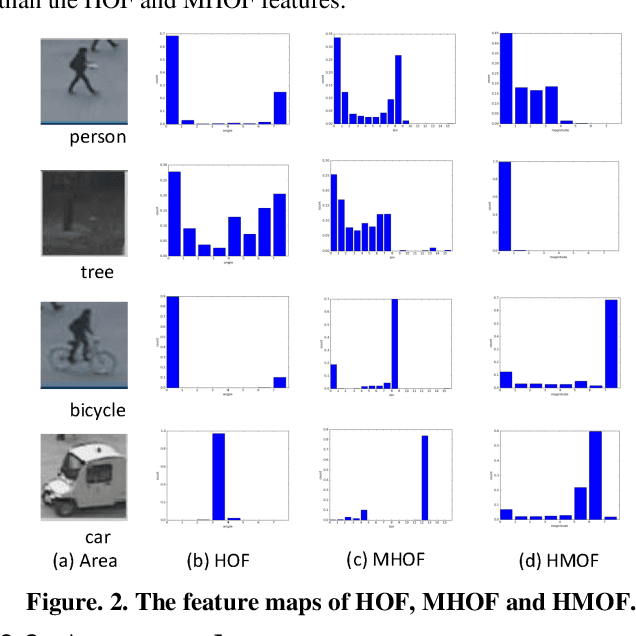
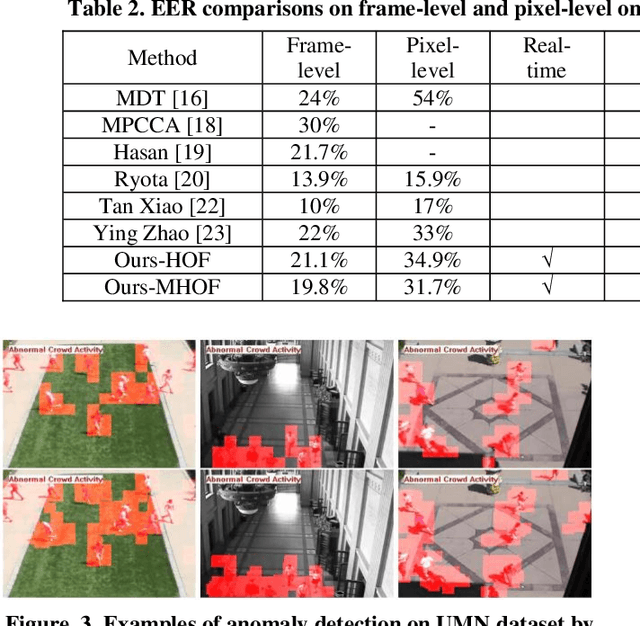
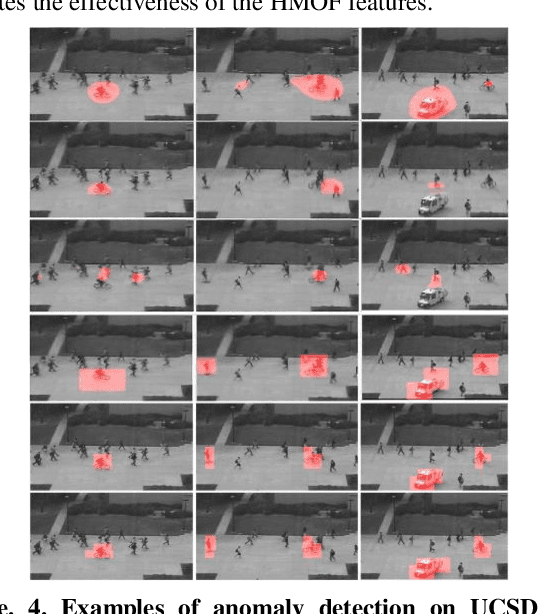
Abstract:Anomaly detection is a challenging problem in intelligent video surveillance. Most existing methods are computation consuming, which cannot satisfy the real-time requirement. In this paper, we propose a real-time anomaly detection framework with low computational complexity and high efficiency. A new feature, named Histogram of Magnitude Optical Flow (HMOF), is proposed to capture the motion of video patches. Compared with existing feature descriptors, HMOF is more sensitive to motion magnitude and more efficient to distinguish anomaly information. The HMOF features are computed for foreground patches, and are reconstructed by the auto-encoder for better clustering. Then, we use Gaussian Mixture Model (GMM) Classifiers to distinguish anomalies from normal activities in videos. Experimental results show that our framework outperforms state-of-the-art methods, and can reliably detect anomalies in real-time.
 Add to Chrome
Add to Chrome Add to Firefox
Add to Firefox Add to Edge
Add to Edge